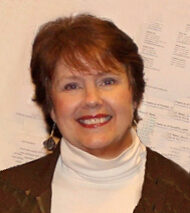
Nancy Huntting, Aesthetic Realism consultant, writes:
Freedom is a word with a tremendous history and immediacy for America. What you’ll read about it in “Freedom & Justice: Aesthetic Opposites” is new. This is knowledge that can enable our nation today to be true to what’s best in America, and to what a family right now in Maine, or Alabama, or Oregon hopes for. It makes sense of some of our country’s most distressing concerns in a way that will thrill you. Read “Freedom & Justice: Aesthetic Opposites,” the great new issue of The Right of Aesthetic Realism to Be Known.
The commentary by Ellen Reiss begins:
Dear Unknown Friends:
Here is the final section of How Aesthetic Realism Sees Art, by Eli Siegel. This 1956 lecture is definitive, historic. Yet in it, with all his wealth of scholarship, Mr. Siegel’s manner has a casualness, an ease, that is also exactitude. The lecture answers the centuries-long unanswered question What is art—and beauty as such? The answer is the basis of Aesthetic Realism: “All beauty is a making one of opposites, and the making one of opposites is what we are going after in ourselves.”
At the end of the talk, Eli Siegel reads a poem that he had recently written—the great “Free Poem on ‘The Siegel Theory of Opposites’ in Relation to Aesthetics.” It is included now in his book Hot Afternoons Have Been in Montana: Poems. I’ll comment on it a little here, after commenting on a pair of opposites that constitutes an emergency for America today. One of those opposites is to be found in the first word of the poem’s title: Free.
Freedom, False & True
Freedom is a beautiful thing, vital for a person—but only if it is REAL freedom. And that means freedom at one with its opposite: justice, accuracy, exactitude. Unless we’re trying to have our notion of freedom be the same as a desire to give justice to what is not ourselves, we’ll have—in perhaps a quiet way, a seemingly mild way—the notion of “freedom” from which all the unkindness in the world has come…. Read more